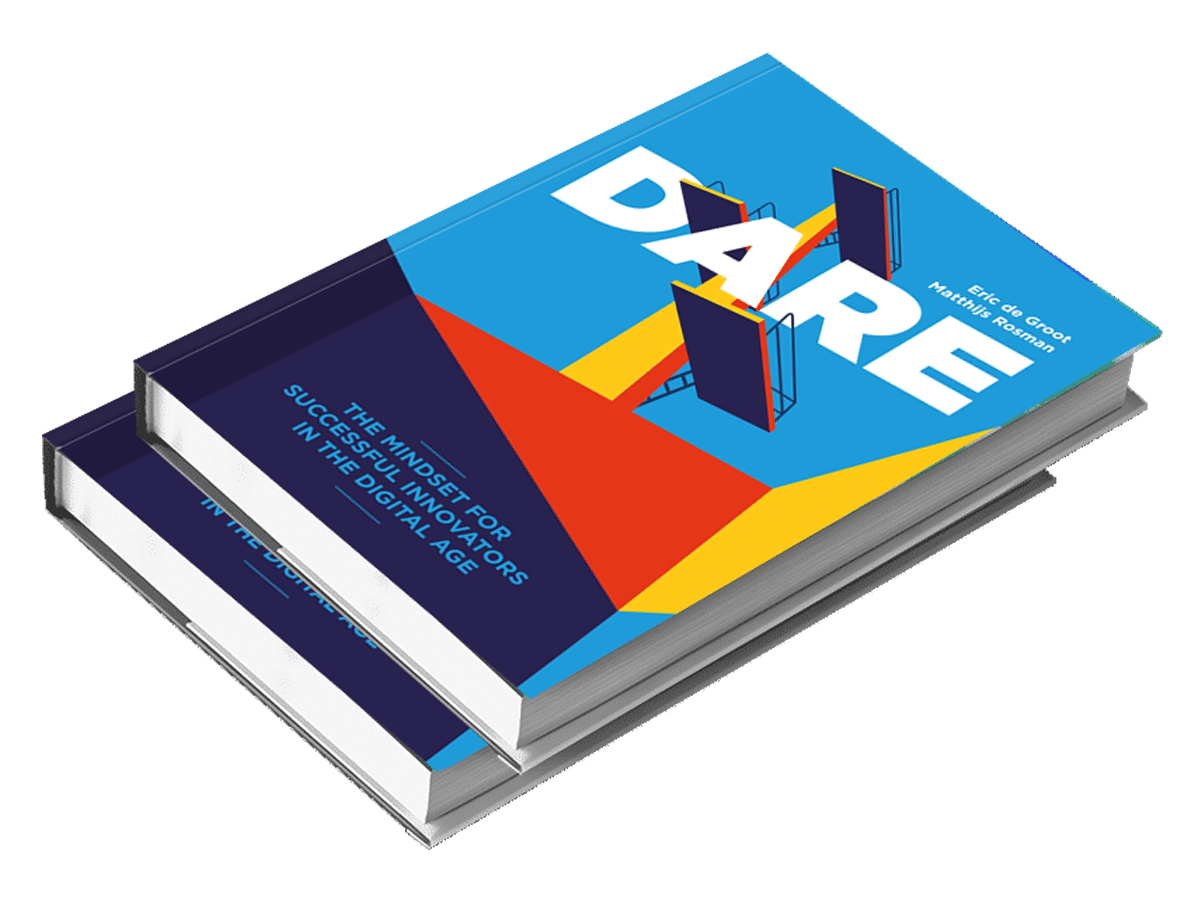In order to create something new for your (potential) customers you need to have some idea who that customer is. Every value chain, one way or another, leads to a customer or user. The end customer is the place were innovation starts. In popular innovation language called design thinking. Putting the customer first, with his (latent) needs and ‘pains’. I cannot do this off course for all companies and industries in this blog but let me take you instead on a more generic journey in customer land. What is happening in the customer space?
Time
The scarcest resource of modern customers. Your real competitor is not another manufacturer, product or service but the limited amount of time left between the many choices your customers make about how they spend their time. Time spent competes with everything. Customers do not want to wait for anything. This, for example, explains the at the time unforeseen success of click and collect. A feature often used next to delivery at home in ecommerce.
Right now
In the economy of now/on demand, real time is the new minimum. Buy now and deliver at the speed of light anywhere/everywhere. The Amazon Dash button was quickly adopted by more than 200 major brands to facilitate lightning-fast delivery of commodity items. The button, a small sensor device that you can stick to virtually any surface in your home, led to a substantial increase in product ordering, sometimes up to four times more than without the Dash. Recently, Amazon announced a move to replace the physical button in favor of virtual alternatives, ‘so customers don’t have to think at all about restocking.’ Another great example of ‘right now’ at Amazon (they are probably very good at this) is their Prime service, which even ships before you have bought the product. This is called predictive shipping.

Connected
We live in a world in which people and things around us are all linked together. Even our own lifestyles are connected. Business and work are barely separated. People are always on, as well as cars, machines, homes, etc. Connection is not restricted to social or convenience purposes. Connection is also about measuring your health, wear-and-tear of objects and machines, productivity and optimizing processes. Customers live in a connected world, which blurs the boundaries between digital and physical. It is the IoT of everything.
Convenience
Customers demand superior service, with zero effort, at all stages of the customer journey. Their expectations are constantly evolving. Even customers’ thinking will be further outsourced. The Amazon Echo ecosystem now offers voice-activated selfie cameras giving fashion advice to owners at home. Google Nest will connect to your climate and comfort systems and advise you on preventive maintenance. It really has become a case of ‘make it easy for me or I’ll go away.’ Convenience has become the new loyalty. Mobility as a Service (MaaS) concepts are another great example of offering seamless, integrated mobility concepts to customers. It is a relatively new playing field where startups like Whim, Tranzer and Radius offer door-to-door travel planning with public and private transport services. From trains to bikes, and from parking to tanking/loading, the entire booking, including payments, is all handled on a digital platform.
Authenticity and transparency
Authenticity and transparency are the crux of any customer-first company nowadays. Customers are seeking security and want to know that there is an underlying foundation of mutual respect, honesty and trust. Customers demand to see and feel the existence of authenticity, sustainability and transparency across the whole value chain. It’s the circular economy. Customers need to connect to a larger cause, social network or affinity group.
My way
Experiences are completely customized and tailored to the needs of the customer. No commitments, no appointments, no subscriptions. Mass customization is possible nowadays. Many e-tailers already offer fully customized homepages for their individual customers. Or take McDonalds, which offers to personalize the preparation of your burger and partners with Uber to bring it to your doorstep. Customers demand a hyper-personalized journey across multiple channels, formats and devices.
Attention
Attracting and maintaining customers’ attention gets harder by the second. Skyrocketing advancements in digital media, and the millions of seamless, connected channels provide customers with endless on- and offline choices to make. It gets even worse. We spend more time online, but sessions are getting shorter. How to get customers’ attention? Save somebody money or time, increase productivity, deliver better choices – in short: create real value.

Engagement
Engagement is all about offering engaging, relevant, customized content at the right time and in the right place. Context becomes even more important than content. Forget about traditional advertising and marketing. The means are far too broad, often lacking relevance and delivered at the wrong time and/or in the wrong place. Advertising is the cost of being boring.
Customer experience
Nearly three-quarters of business leaders say that delivering a relevant and reliable customer experience is vital for today’s success (HBR research 2017). Almost 93% agree that this will be even more important in the years ahead. Nobody owns the customer anymore, but someone always owns the experience. Loyalty today is nothing more than the absence of something better (yet). The experience goes virtual and digital – next to real experiences – with AR/VR as the next big thing, with VR probably having greater potential than AR. Experience is the overall quality of every interaction a customer has with your company, products and services. There is no online or offline anymore, only experience, which is superseding the boundaries of on- and offline. Customers are looking for a premium experience rather than a specific product.
Acceptance of tech
We live between the states of fear and excitement. We are in love with or afraid of new emerging technologies that will automate physical tasks (robotics), intellectual work (cognitive computing) and customer services (everything from self-help kiosks to voice-activated systems and grocery-store scanners). But what is more important than tech itself, and what it can do for you and society, is the trust or acceptance that this a good thing. Customers will, or already, accept and trust smart devices and robots to take over our ‘jobs’ and even consider them to be friends, surrounded by artificial intelligence.
One of the foundations of our firm, RevelX, is the trend of digital transformation. Today we would like to argue that digital transformation is just a fact of life. As a matter a fact, the current COVID-19 crisis is the biggest catalyst for digital transformation. Every company will or should be a tech company, just like every company should be a customer-focused company. The millennial generation and digital natives don’t even consider thinking about digital transformation as a new trend or development. It is already part of their DNA.
By the way, in the introduction I mentioned design thinking. I will later do a post on dealing with this important method. My next blog is the last of the sequence of looking into the future. And it will for sure not be the fortune cookie you have been hoping for. We take a closer look at what and who will kill your company. Disruptive forces that are a threat to your existence. Stay with me.

Introducing DARE: The Mindset for Successful Innovators in The Digital Age
Learn how successful innovators and business leaders realize growth with DARE – now Amazon’s #1 best-selling title!
Eric de Groot
Boardroom strategist with unparalleled creative brainpower. Always focused on growth. Creates speed by combining business modeling with inventive pragmatic solutions. Invests in involvement over a sustained period.
Related posts
Step 1. Why every CEO should play the DisruptR game with their team
DisruptR Game for CEOs fosters strategic innovation. Learn…
June 22, 2025
Innovation governance: Why every CEO needs a Growth Board
Growth Board for CEOs is essential. Discover how this…
June 19, 2025
Why innovation belongs on the CEO agenda
Innovation on the CEO agenda is essential. Explore why…
June 16, 2025



